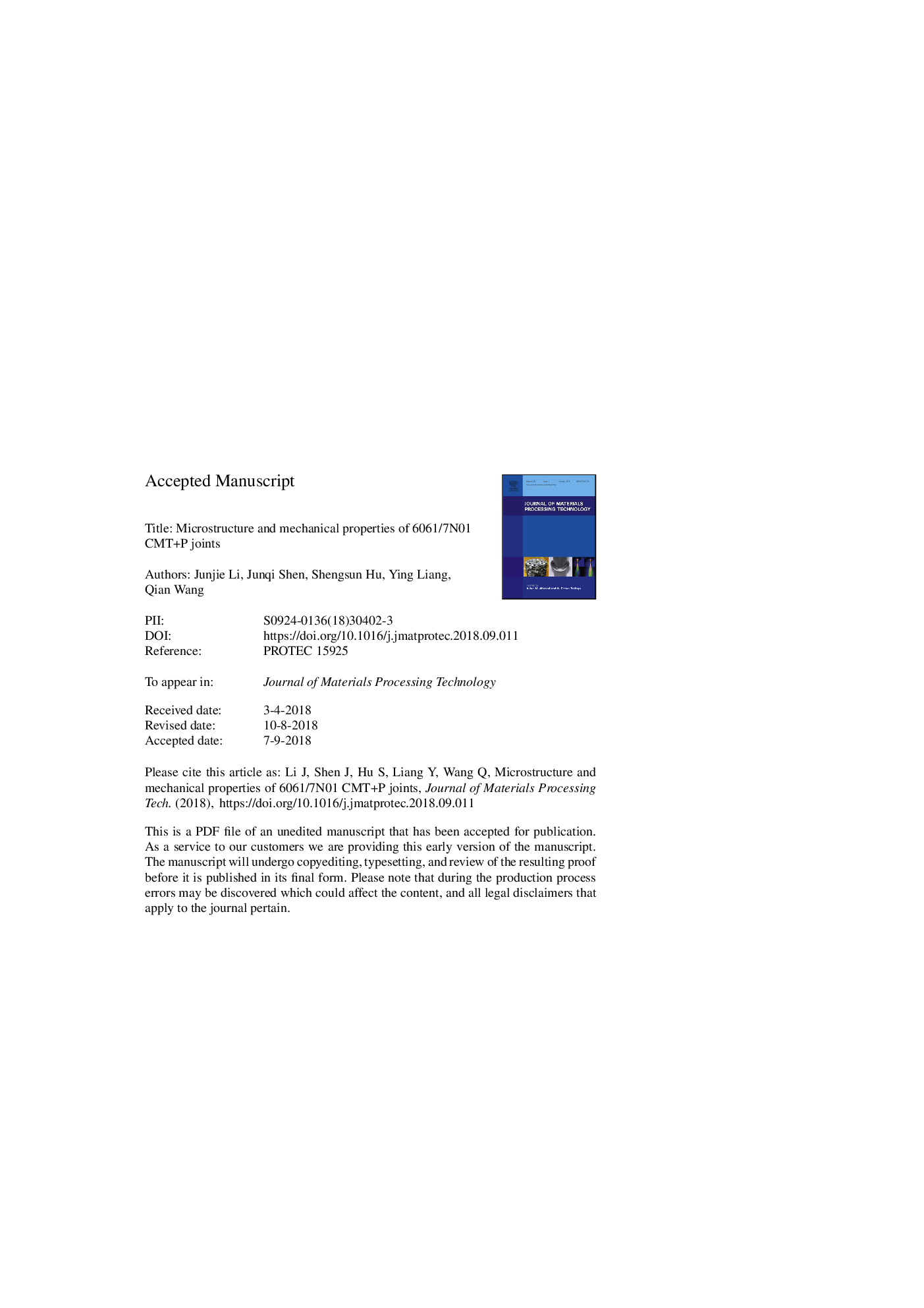| Article ID | Journal | Published Year | Pages | File Type |
|---|---|---|---|---|
| 10146759 | Journal of Materials Processing Technology | 2019 | 25 Pages |
Abstract
6061/7N01 dissimilar aluminum alloys were welded by the cold metal transfer plus pulse (CMTâ+âP) technology. With a decrease in the ratio of number of CMT stages to P stages in one CMTâ+âP cycle (CMT/P ratio), the heat input increased and grain growth was observed in the weld metal. The grains in the heat-affected zone (HAZ) were equiaxed on the 6061 side, and the grains in the HAZ on the 7N01 side retained their strip shape. As the CMT/P ratio decreased, the widths of the partially melted zone (PMZ) and HAZ on both sides increased. Asymmetric hardness distribution profiles were observed for all the samples due to the obvious differences in the microstructure of the two base metals. Micro-hardness exhibited an increasing tendency from the HAZ to the PMZ on the 6061 side. The changes in the trend of micro-hardness on the 7N01 side were opposite of those on the 6061 side due to the adverse effect of Si impurities. When the ratio of CMT/P was 1:7, the strength of the weld joint was approximately 60% of the strength of the 6061 substrate due to the transformation and coarsening of the strengthening phase. The fracture site is located in the HAZ on the 6061 side. Dimples were uniformly distributed on the fracture surfaces, which indicates a typical ductile fracture.
Keywords
Related Topics
Physical Sciences and Engineering
Engineering
Industrial and Manufacturing Engineering
Authors
Junjie Li, Junqi Shen, Shengsun Hu, Ying Liang, Qian Wang,
